Western Union Telegraph Company
U.S. Telegraph is another game inspired by real life, which, by the way, I just love! The Pony Express was one of the pioneers in the mail service business, but it only lasted a short period of time: from April 1960 to October 1961. Its legacy, however, lived on, and proved to everyone that a transcontinental system was viable.
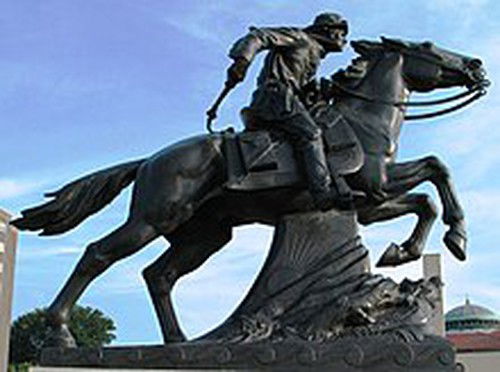
So, inspired by the Pony Express, the Western Union Telegraph Company began working on a gigantic project, the U.S. Telegraph, which would connect, all at once at high speeds, California to the rest of the United States.
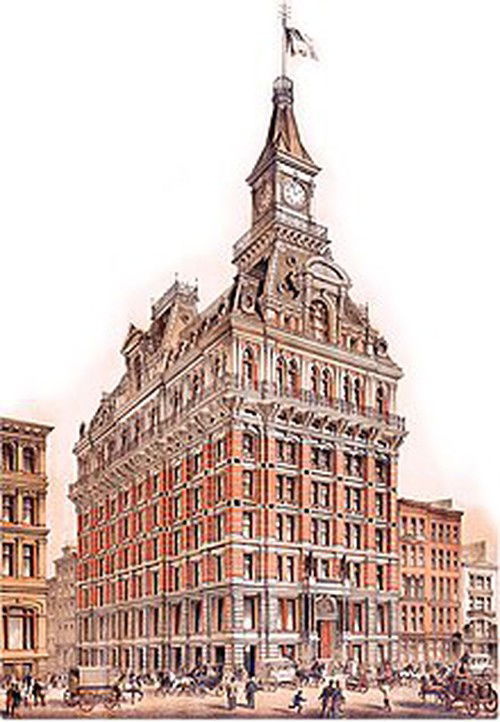
Though extinct nowadays, Western Union's telegraph service became the most popular service in the American market.
Now it's your turn, as an investor, to be a part of the history of the U.S. Telegraph!
Game Info
U.S. Telegraph is a board game played with 2 to 4 players, for ages 10 and up, by designer Marcel-André Casasola Merkle. It was illustrated by Jules Dubost and Fabrice Weiss.
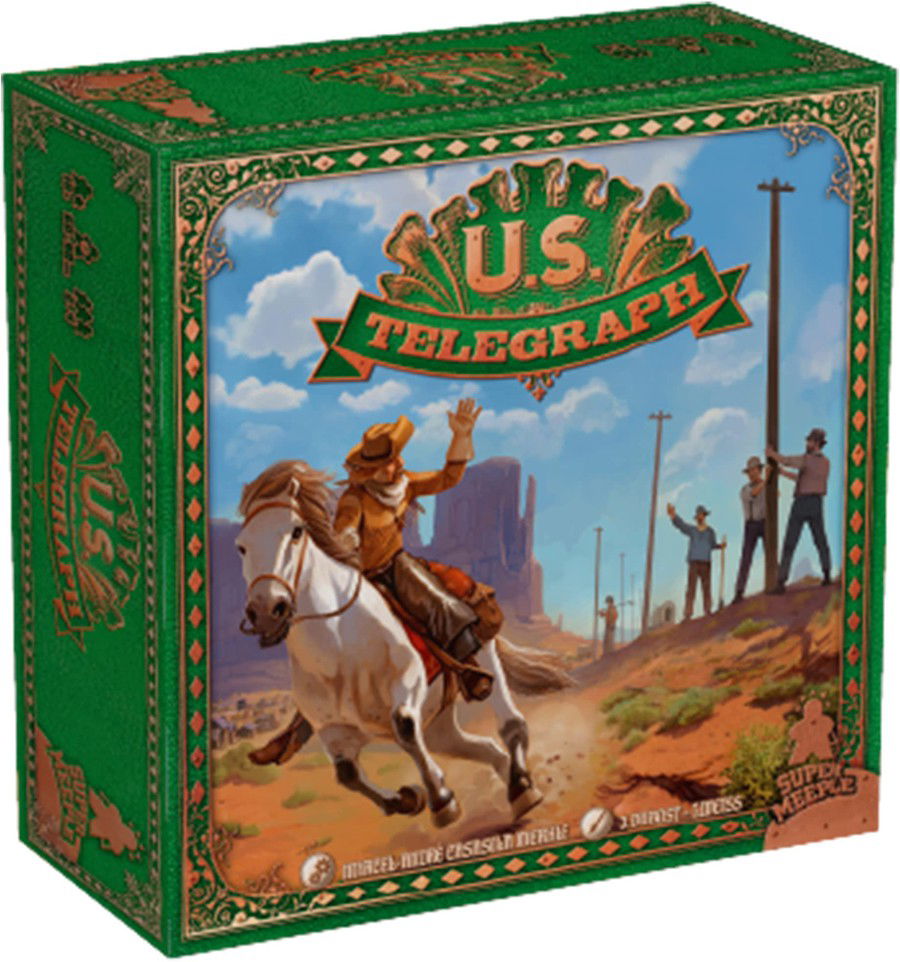
It was also released in 2018 by Super Meeple domestically. It still hasn't been released in other countries, like Brazil, so far. This board game is an upgraded new edition of Attika (2003), which was set in Ancient Greece. Its main mechanics are tile placement, network and grid building, and a modular board.
Besides the change to the game's theme, as it is now set in the Wild West, the U.S. Telegraph resolved a serious issue in the game: we couldn't easily control what we had built already, which significantly delayed the game, as we couldn't tell whether we got a bonus or not. We needed to stop the game constantly to check what we had built and find out whether we got a bonus or not. The game now is much more fluid. Point for U.S. Telegraph!
U.S. Telegraph resolved this issue and, in a way, "inherited" from Attika the Meeple's Choice Award, as well as several nominations like Spiel des Jahres*, the board game Oscars.
Besides upgrading its predecessor, U.S. Telegraph isn't language-dependent. This means you can play it even if you don't speak the language it was published in (Attika was also like this).
Let's dive right in!
The Game
In this game, we're investors, and we have just agreed to finance new projects that are part of the U.S. Transcontinental Telegraph network.
We'll race to build the best routes faster than anyone else, fight for the best resources to cheapen our costs, and, finally, dominate the telegraph network market. That's the story of U.S. Telegraph.
Basically, we have to build our structures to connect 2 major cities, or at least build all our structures, even if we can't connect 2 major cities. These are the only two ways to win the game.
There are 7 main buildings, and, obviously, many structures around them (30 in total):
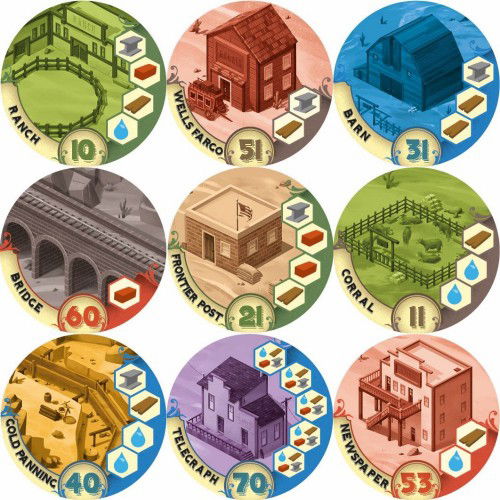
Each structure costs something to build, a resource of some kind, which can be a combination of:
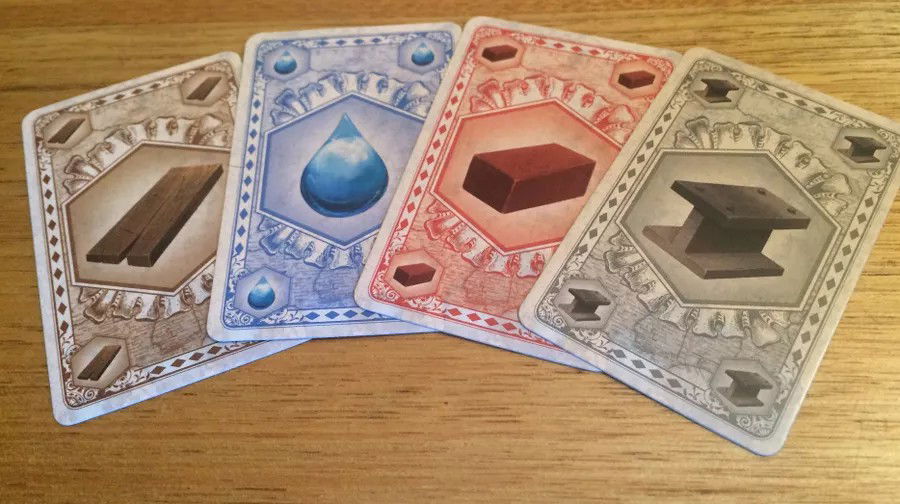
Now that you know what you can build and what they can cost (resources), a turn in this game is extremely simple. You can pick between 3 options:
Notice that, for the first 2 actions, you can do them up to 3 times. Here's a nice detail in the game: if you don't actually perform all actions 3 times, you can draw resource cards instead of performing an action. That is really relevant!
When you decide to draw a building from a building deck, you can construct them directly on your main gameboard or place them on your playerboard up to 2 times. If you decide to place them on your playerboard, it will be quite simple, as there is a corresponding space on your playerboard for all buildings.
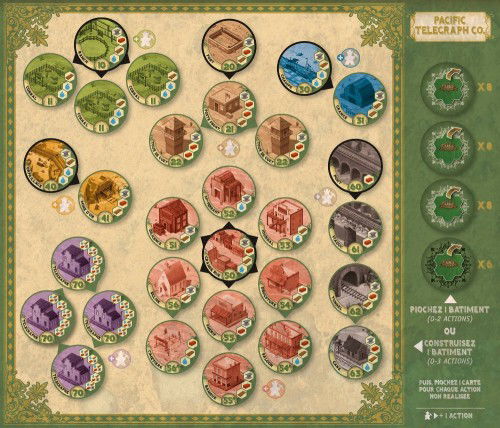
If you decide to construct something, there are four things you must consider:
After you do that, and pick one of the 3 actions you have available, it's time to pass your turn to the player to your left.
Basically, that's a turn in U.S. Telegraph!
End of the Match
The game ends on the spot when a player completes one of these two goals:
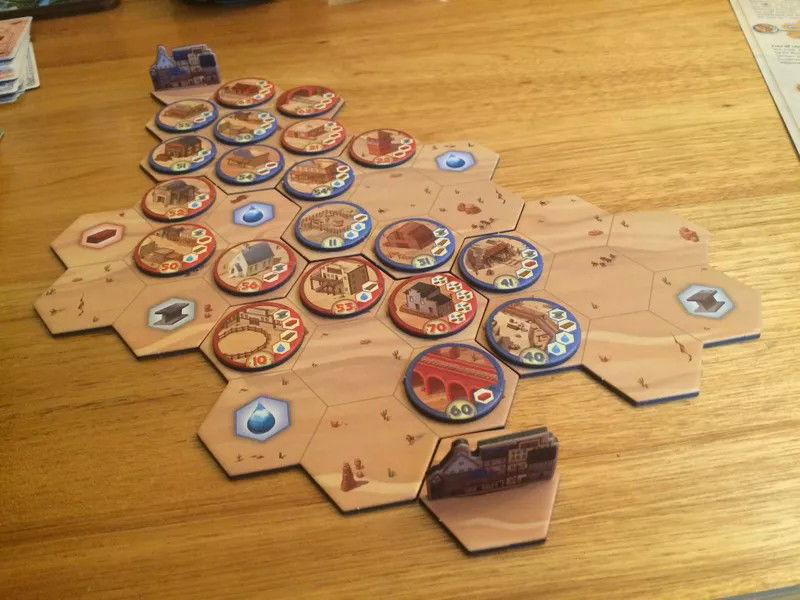
Anyone who completes either of these 2 goals first wins.
Tips and Strategy
Well, U.S. Telegraph relies more on strategies than it looks. Check out a few of them that will make your life easier and give you many advantages.
Remember how I said there were 7 "main" buildings? So, if you build these main buildings "before" the other structures that are directly connected to them, you'll gain a big advantage. If the other structures are built directly next to the main structure, you can build them for free. That's right! This will add a new layer of strategy to the game!
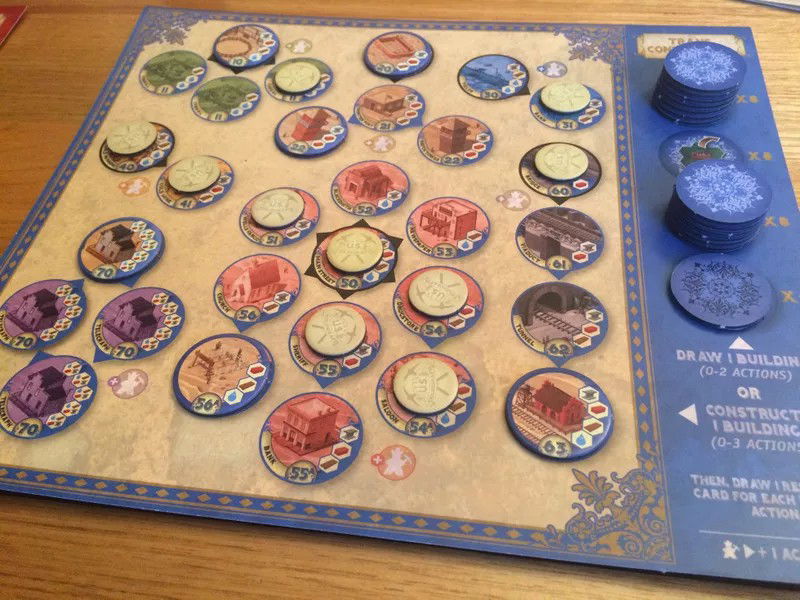
Your structures will be available on your playerboard, in one pile for your main buildings and 3 other piles for the buildings around your main buildings. When you run out of each of those piles, you need to get a new region tile and put it in play. Yeah, you'll have a modular board, and the number of region tiles you'll have depends on how many players are playing.
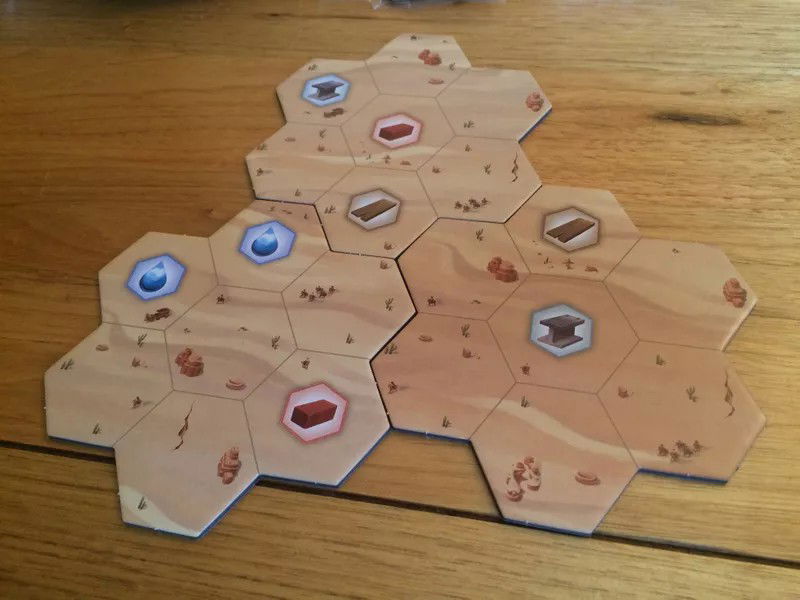
So, using an entire construction pile may be an excellent decision to make your route simpler and less contested. After all, in a modular board, a lot can happen. Point for the game designer!
And, there's more. Each time you finish building a structure, for instance, the ranch and all 3 corrals, you'll get a meeple (worker) which gives you another action to perform whenever you like. This changes everything. Being able to perform all 3 actions at once may be the difference between winning or losing.
U.S. Telegraph is so great that there's even more. The best strategy truly is to build a single, connected route - you can build in other directions, from different "fronts", and connect them later, but this will cost you. More precisely, it will cost you 1 extra resource whenever you're building something for the first time on that route. And, obviously, if you build a 3rd route, 2 extra resources for the first building on that new route, and so on and so forth.
I definitely strongly suggest you build a single route! This will also help you disrupt your opponent's routes!
Follow these tips, create an efficient telegraph network and win the game!
Unboxing, Rules, and Gameplay Videos
Check out this unboxing:
Learn the rules:
Watch some gameplay:
Teaching Moments
If you want to teach anyone a little bit of history, spacial awareness, resource management, and production chains while having a lot of fun, U.S. Telegraph is perfect for you!
The gameboard is modular and varies in size according to how many players are playing, so, spacial awareness is critical. You'll also have a different number and types of region tiles each time you play the game, as you need to shuffle your tiles before you put them in play.
This means you'll need to read the board, figure out how many tiles are there, and where are the best resources to optimize your building process. This will greatly improve your spacial awareness!
You'll also have to manage your resources constantly, as you'll have to manage your resource cards and "discount" the resources available on the gameboard. I didn't mention it before, but you'll also need great math skills. Another point for the game designer, obviously.
Finally, the idea of a production chain, or chain reaction, will be important when you construct your main buildings first and then your secondary structures, preferably right next to them to build them for free. It is a great workout for your brain.
U.S. Telegraph is a lesson in history as well, as it was inspired by an essential time in history for the United States.
I strongly recommend U.S. Telegraph for your collection!!!









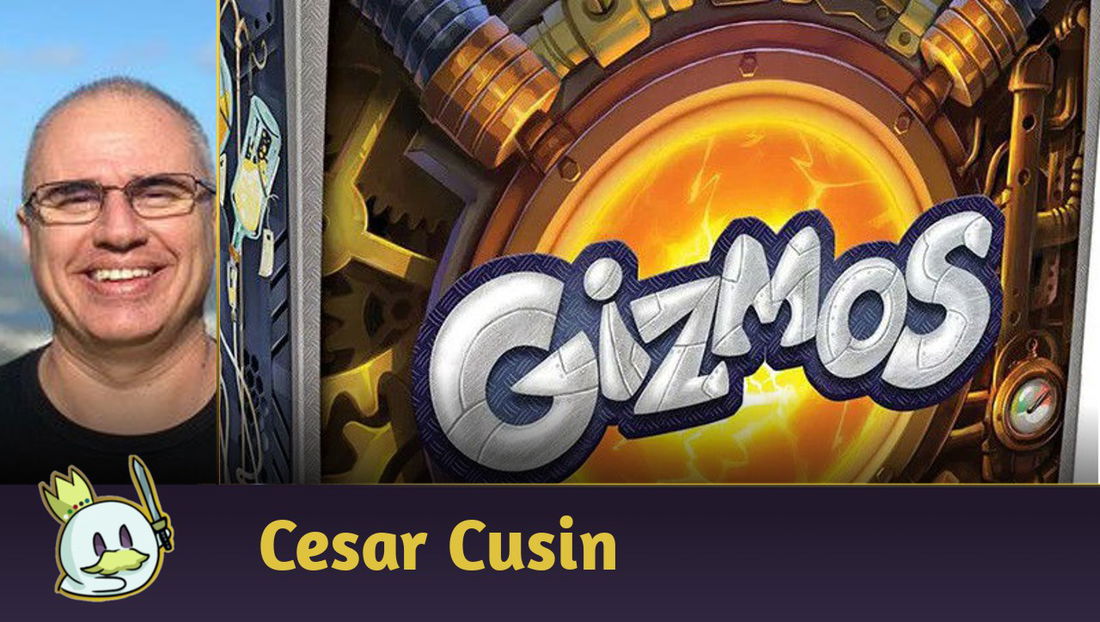




— Comentários 0
, Reações 1
Seja o primeiro a comentar